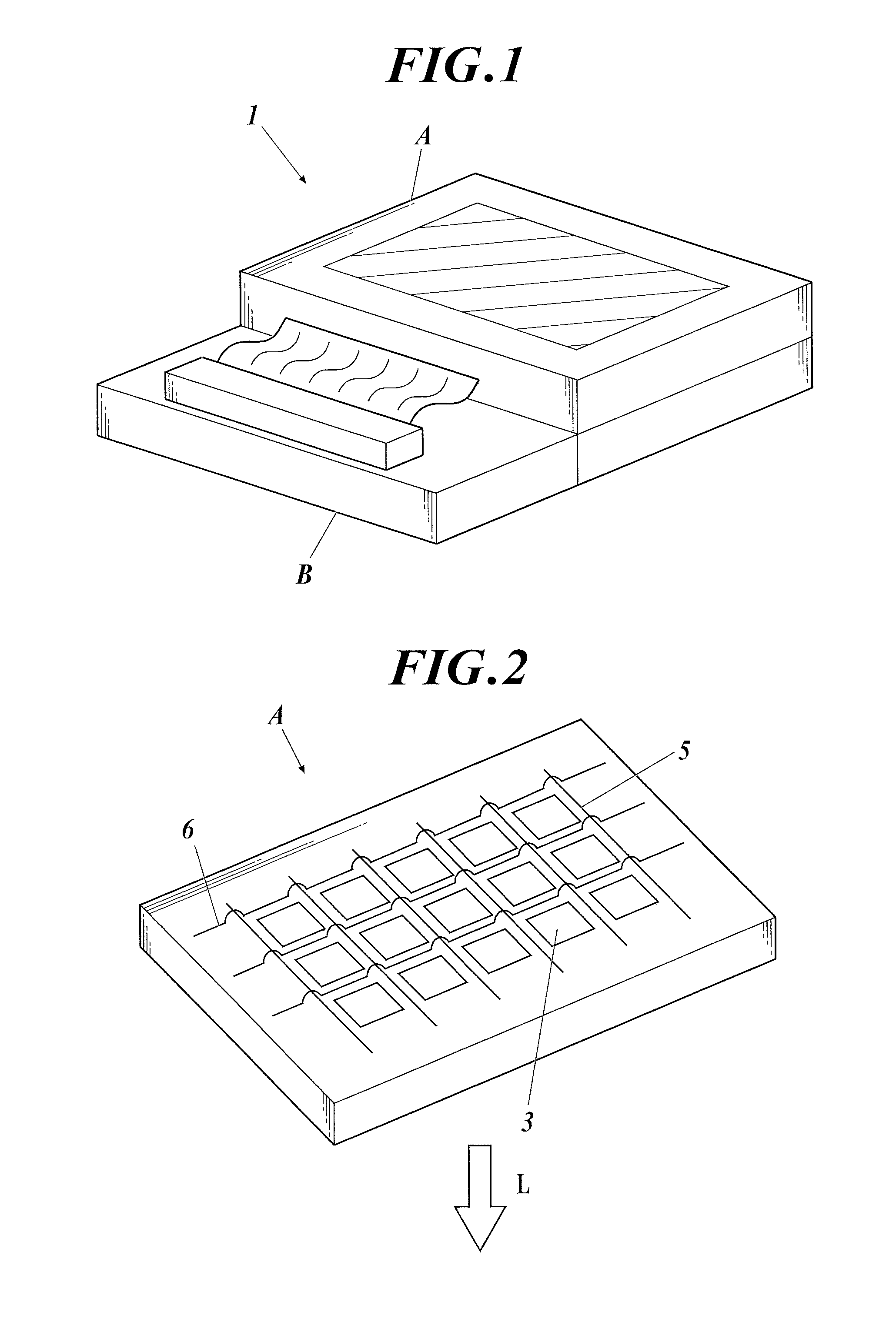Material for organic electroluminescent elements, organic electroluminescent element, display device and lighting device
a technology of electroluminescent elements and materials, applied in thermoelectric devices, organic chemistry, group 3/13 element organic compounds, etc., can solve problems such as luminous efficiency and durability, and achieve excellent durability, high triplet excitation energy, and high luminous efficiency
- Summary
- Abstract
- Description
- Claims
- Application Information
AI Technical Summary
Benefits of technology
Problems solved by technology
Method used
Image
Examples
examples
[0257]Hereinafter, the present invention is detailed with Examples. However, the present invention is not limited thereto. Note that “part (s)” or “%” used in Examples stands for “volume % (percent by volume)” unless otherwise specified.
first example
Production of Organic EL Element
[0258](1) Production of Organic EL Element 101
[0259]On a 50 mm×50 mm×0.7 mm (thickness) glass substrate, ITO (indium tin oxide) was deposited to be 150 nm thick and subjected to patterning to form an anode, and then the transparent substrate provided with this ITO transparent electrode was subjected to ultrasonic cleaning with isopropyl alcohol, dried with a dry nitrogen gas and subjected to UV ozone cleaning for five minutes. On this substrate, a solution of poly(3,4-ethylenedioxythiophene)-polystyrenesulfonate (abbr. PEDOT / PSS, Baytron P AI 4083, produced by Bayer) diluted with pure water was deposited by spin coating and thereafter dried at 140° C. for one hour to form a 50 nm thick hole injection layer. This transparent substrate was fixed to a substrate holder of a commercially-available vacuum deposition device.
[0260]Vapor-deposition crucibles of the vacuum deposition device were filled with materials for the respective constituent layers at the...
second example
(1) Production of Organic EL Element 201
[0285]The organic EL element 201 was produced in the same way as the organic EL element 101 except that the light emitting layer was formed such that comparative compound 1 as the host material and D-41 as the phosphorescent material were co-deposited at a deposition rate of 0.1 nm / sec to be 90 volume % and 10 volume %, respectively, to be 30 nm thick.
(2) Production of Organic EL Elements 202 to 215
[0286]The organic EL elements 202 to 215 were produced in the same way as the organic EL element 201 except that comparative compound 1 as the host compound was changed to the compounds shown in TABLE 2.
[0287]201 to 215>>
[0288]With respect to the samples, the same evaluations made with respect to the organic EL elements 101 to 120 were made. The evaluation result is shown in TABLE 2.
TABLE 2EXCITONHEATHALF-LIFESTABILITYRESISTANCEELEMENTHOST(RELATIVE(RELATIVE(RELATIVENO.MATERIAL*1VALUE)VALUE)VALUE)REMARK201COMPARATIVE100100100100*2COMPOUND 1202COMPARA...
PUM
| Property | Measurement | Unit |
|---|---|---|
| temperature | aaaaa | aaaaa |
| temperature | aaaaa | aaaaa |
| temperature | aaaaa | aaaaa |
Abstract
Description
Claims
Application Information
 Login to View More
Login to View More - R&D
- Intellectual Property
- Life Sciences
- Materials
- Tech Scout
- Unparalleled Data Quality
- Higher Quality Content
- 60% Fewer Hallucinations
Browse by: Latest US Patents, China's latest patents, Technical Efficacy Thesaurus, Application Domain, Technology Topic, Popular Technical Reports.
© 2025 PatSnap. All rights reserved.Legal|Privacy policy|Modern Slavery Act Transparency Statement|Sitemap|About US| Contact US: help@patsnap.com



